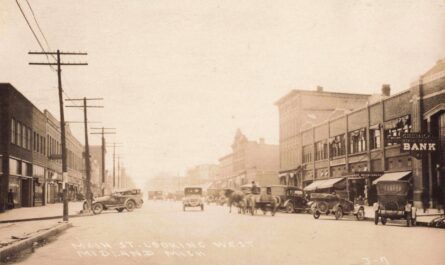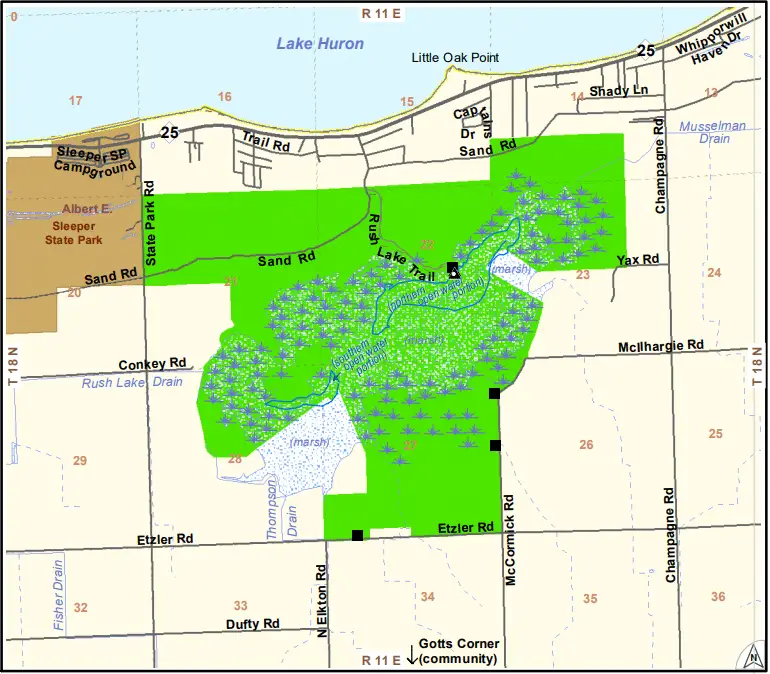Deep beneath Lake Huron lies a prehistoric hunting site older than the pyramids, changing what we know about life in North America.
A Ridge Beneath the Waves
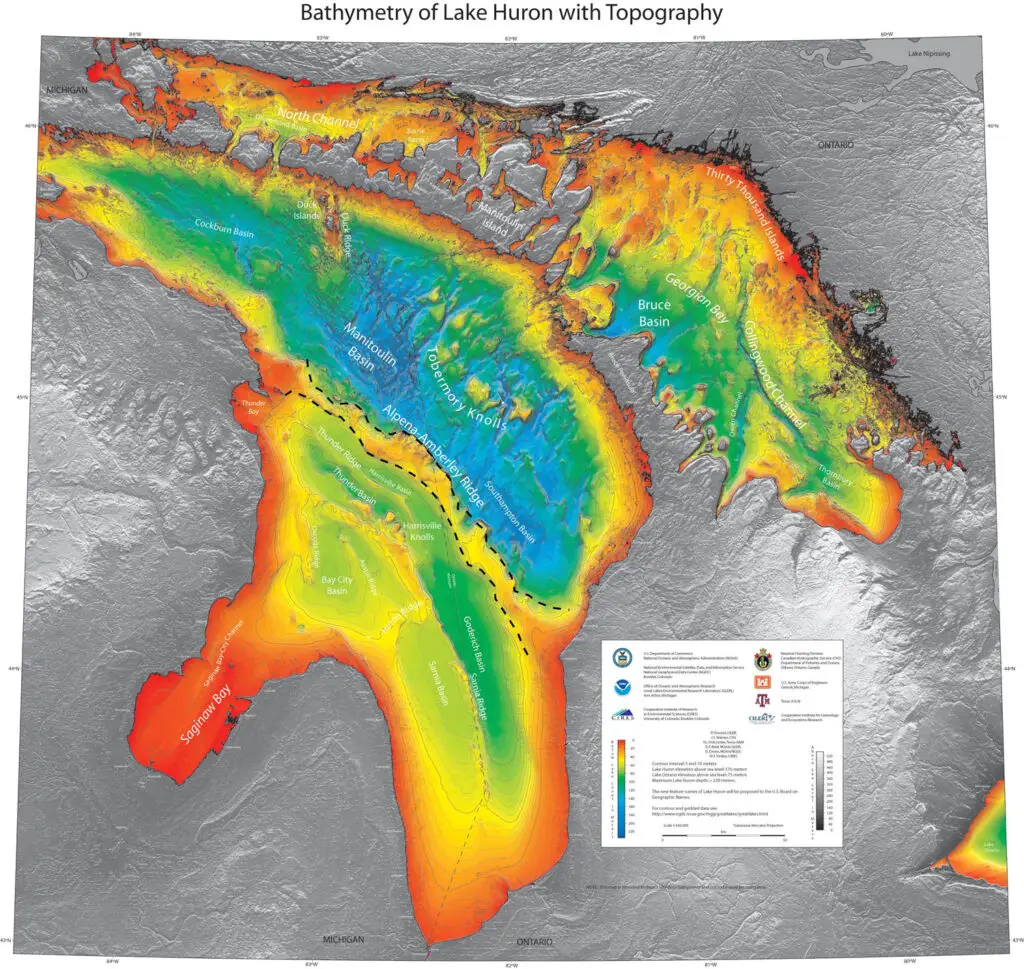
In 2007, scientists exploring the bottom of Lake Huron found something unexpected off the coast of Alpena. Sonar images revealed rock formations aligned too perfectly to be natural. The discovery pointed to something astonishing: a 9,000-year-old hunting ground built when that part of the lake was dry land.
The underwater structures were found along what’s called the Alpena-Amberley Ridge—a submerged land bridge that once connected northeastern Michigan to Ontario. During the last Ice Age, this ridge was dry and teeming with life. Herds of caribou migrated across it, and ancient hunters followed.
Those early people left behind more than footprints. They built stone structures—carefully arranged rock lines designed to funnel caribou into kill zones. These formations represent the oldest known large-scale hunting system in North America.
Ice Age Innovation in Michigan
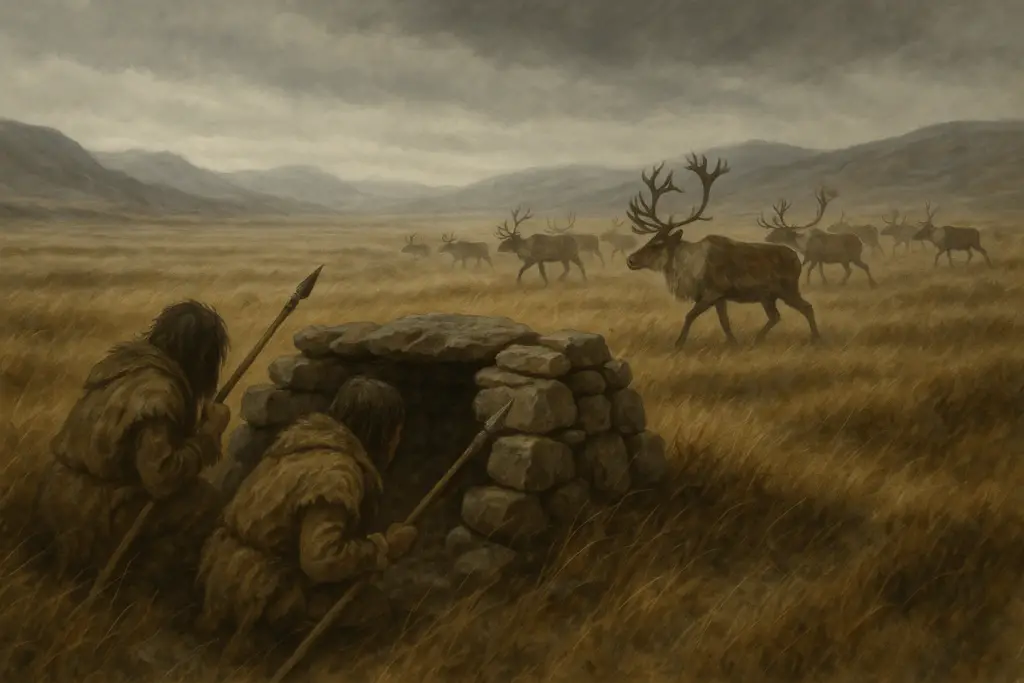
Roughly 9,000 years ago, Lake Huron had not yet filled to its present depth. The Alpena-Amberley Ridge acted as a corridor for migrating wildlife. Small bands of hunters—likely the ancestors of modern Indigenous nations—returned here seasonally to intercept caribou during their crossings.
The structures they left behind show a sophisticated understanding of the landscape. Rock walls were used to direct animals. Ambush points were strategically placed. Archaeologists believe these were part of a broader seasonal hunting strategy that supported communities for generations.
University of Michigan anthropologist Dr. John O’Shea led the research team that discovered the site. His findings changed how scholars view early human activity in the Great Lakes region. “It’s one of the best-preserved hunting landscapes ever found,” O’Shea said in multiple published reports.
Underwater Archaeology and Preservation
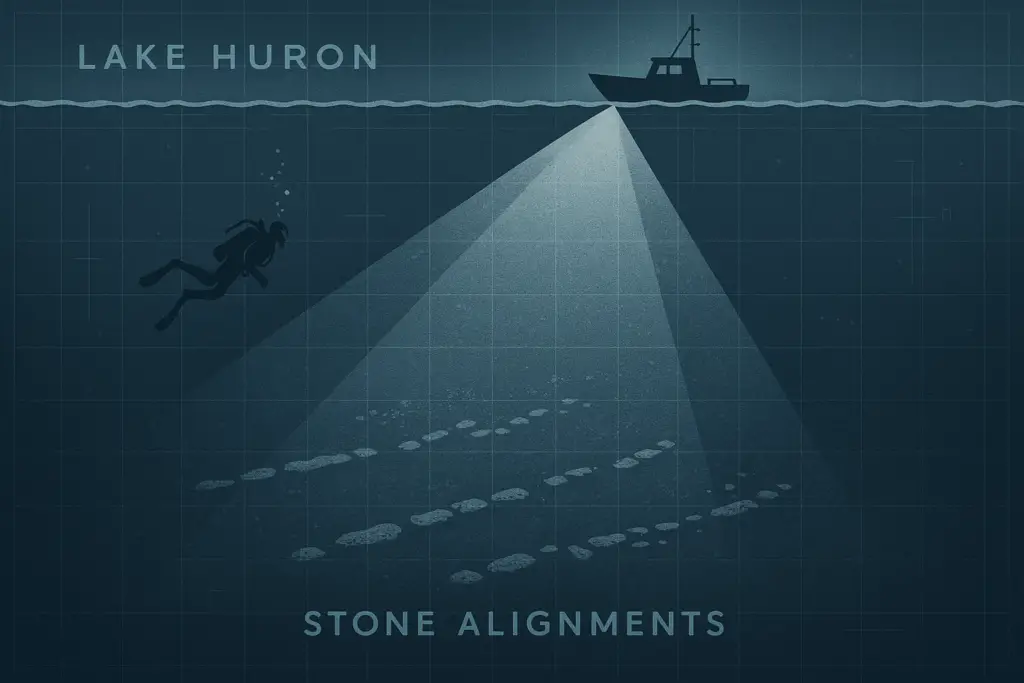
Exploring a submerged site is no easy task. The structures sit beneath more than 100 feet of cold water. Researchers used advanced sonar, remote-operated vehicles, and deep-sea diving to document the ridge—without disturbing it.
Unlike many land-based archaeological sites, this one has remained untouched for millennia. The cold, low-oxygen environment at the lake’s bottom helps preserve organic material like bone, charcoal, and wooden tools. That makes it one of the only places in the world where Ice Age hunting strategies can be studied in their original form.
The Alpena-Amberley Ridge is more than a fossilized footprint. It’s a window into how early humans adapted to environmental change—and a reminder that the Great Lakes basin has been home to human ingenuity far longer than most people realize.
Connecting to Indigenous History

Many oral histories among Great Lakes Indigenous communities reference ancient migrations, hunting trails, and vanished lands. These accounts, passed down through generations, describe places that modern maps can’t show—but underwater archaeology may now confirm.
Tribal leaders, especially from the Anishinaabe nations, are working with scientists to connect these stories with the ridge’s physical features. It’s part of a growing movement to blend archaeological research with Indigenous knowledge—recognizing that the past is still alive in modern culture.
Why the Alpena Ridge Still Matters
The Alpena-Amberley Ridge isn’t just a scientific marvel. It’s a story of survival, adaptation, and the long human history embedded in Michigan’s landscape. It also offers insight into how ancient communities responded to climate shifts—an issue we still face today.
This submerged hunting ground proves that the story of Michigan began long before borders, highways, or settlements. It began with people who walked across a windswept plain that’s now hidden beneath the waves.

